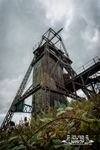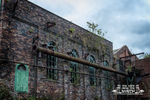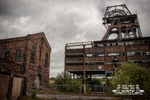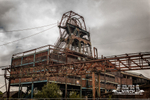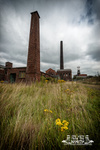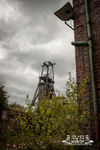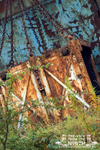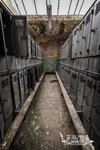Chatterley Whitfield Colliery, Stoke

Date Visited: September 2007
Chatterley Whitfield Colliery was once one of 22 collieries on the Staffordshire coalfield, and one of only 2 remaining in preservation (the other being Apedale).
The colliery opened in the first half of the 19th century, and was the first to produce a million tons in a year. However, after World War 2, as oil imports increased, the coal industry contracted and output dropped from over a million tonnes a year in 1937 to 408000 tons in 1965. In 1974 it was decided that Whitfield coal could be more easily worked from Wolstanton Colliery and an underground roadway was driven to join the two pits. In 1976 coal drawing at Chatterley Whitfield came to an end. It was then run as a mining museum, but closed in 1991. Since then the place has fallen into terminal decline and very few buildings are accessible. English Heritage has decreed that the site is of national importance but requires around £25 million (in 2007) spending on it.
Although numerous explorers have gone over the fence in recent years, my two visits were restricted to the annual open days. Given that most of the place is either unsafe or sealed up tight, I didn’t feel like I was missing out on that much. Unlike other mining museums in Britain, Chatterley Whitfield has pretty much all of its surface infrastructure intact, albeit in an increasingly poor state. But this advanced state of decay is also what makes it uniquely photogenic. Careful composition and choice of lens allows you to minimise the amount of security fencing and focus in on the interesting elements.
Return to: Industrial Landscape or Galleries of photographs
